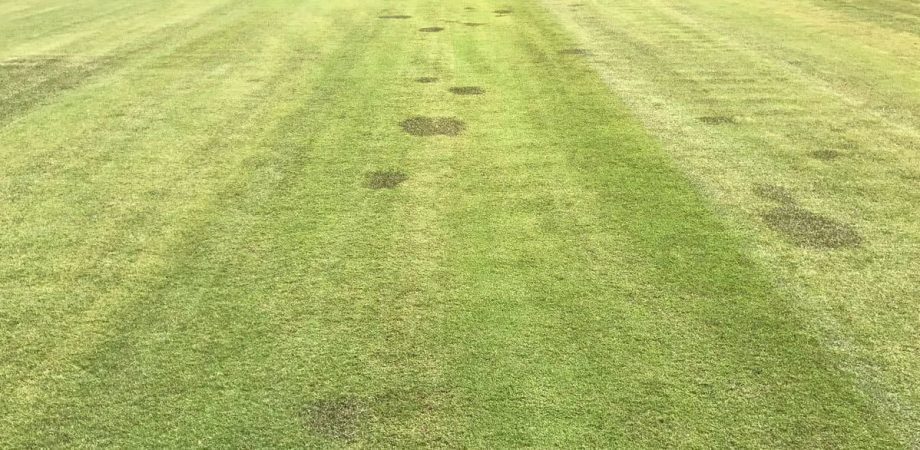Bermudagrass Killer: Spring Dead Spot

Spring dead spot can ravage highly-managed bermudagrass. While we would like to think a singular management practice could entirely control it, this is not the case. Regular fungicide applications in conjunction with proper fertility and cultural practices will provide the best results for preventing spring dead spot.
Spring dead spot’s disease activity begins in the late summer to early fall. The disease rots away bermuda’s roots, stolons, and crowns, making it weaker and more vulnerable to freezing injury.
In the spring, as bermuda ends its dormancy and green up begins, spring dead spot symptoms become highly visible. Circular, straw-colored, patches of turf pop up, which are full of the still-dormant bermuda. Ultimately, the dormant bermuda turf dies, collapses, and creates sunken areas in the turf.
Proper Fertility
Proper fertility can considerably slow down spring dead spot. Avoiding nitrogen fertilizer use in the later summer and early fall will assist bermuda in maintaining hardiness for the winter and prevent injury. Controlling potassium fertility will also aid bermuda in avoiding winter injury and managing disease.
Maintaining adequate root zone acidity is vital to controlling spring dead spot on bermuda. Bermuda’s root acidity should be a pH of 5.8-6.2. Here are a few ways to maintaining proper pH:
- Apply greens grade fertilizers with ammonium sulfate, like 13-2-13.
- Spoon-feed greens at lower rates, using slower release fertilizers, 20-0-20.
- Apply Minors and Amperage, on a two-week interval.
- Apply The Anderson’s Contec DG 0-0-25 or Country Club MD 12-0-24 in the fall at a rate of about 2 lbs/1000.
- Apply organic fertilizers, such as Nature Safe 10-2-8, in the fall.
- Apply lime and gypsum in the fall.
Fungicide Applications
Spring dead spot fungicide applications are not a cure-all. Proper fertility and cultural practices should be undertaken alongside applying fungicides to control spring dead spot successfully. Keeping that in mind, two applications of fungicide in the fall, such as ArmorTech TEB 360 XL, ArmorTech Zoxy-T, ArmorTech Zoxy 2 SC, BASF Maxtima, or Envu Resilia will help manage spring dead spot.
Cultural practices
Slow down spring dead spot by reducing thatch build-up, aerifying, and verticutting.







